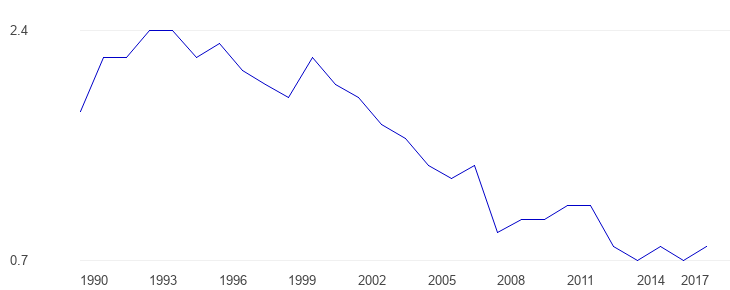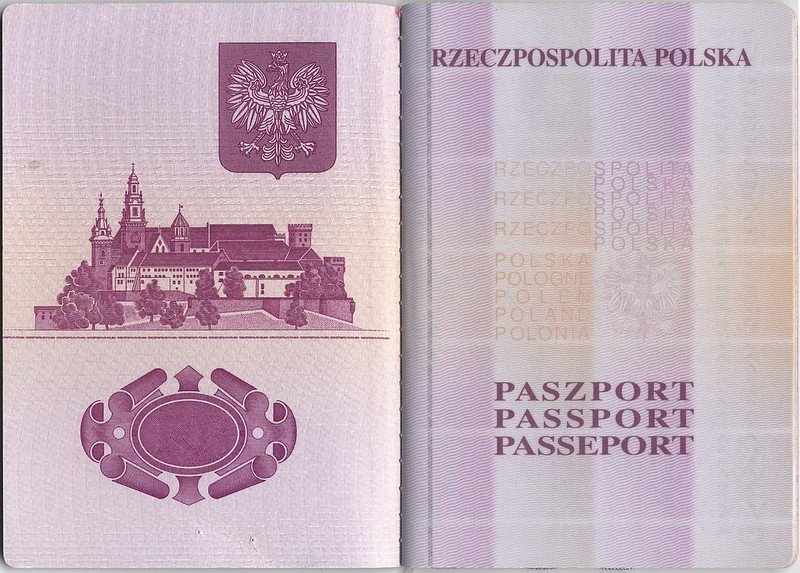A Story of Economic Success: How Poland Is Motivating Polish Citizens to Return
It was almost 10 years ago, and I started dating a girl* from a country that I had little knowledge about back then.
She told me she was from a city called Lodz (that is not really how you write the name of this place, but I cannot find the special characters here on this keyboard). I googled the city and found an article from the British tabloid The Sun (one of the best-selling British newspapers). The headline?
The Polish city that’s moved to Britain.
The article, later removed from the newspaper website after the city mayor threatened to sue them, had some grim descriptions of the place, like:
Derelict buildings, boarded-up businesses, crumbling masonry — the poor and elderly getting in line to buy bread.
Or
On Piotrkowska Street, which at three miles long is one of the longest high streets in the world, the cobbled thoroughfare is empty even in the middle of the day,
Or
Half the adult population has left the city,” one Lodz inhabitant tells, They are in Scotland, London, and Bournemouth, where they have a beautiful flat, a nice TV, a car — things we cannot have here.
Scary, right?
While containing some exaggerations, the article was right at one point: indeed many people left Lodz during the first decade of this century. The population fell from nearly 850 thousand in the 1990s to less than 700.000. Most of those who left were working, productive adults.
Let’s be clear with one thing: Lodz maybe is not among the best places to live in Poland.
But this wasn’t just something that happened in Lodz; it happened all over the country.
Because Poland was not a good place to live back then — at least not when compared to most of the countries whose doors were open when the nation gained access to the European Union.
But the trend has changed in the last 5 years.
It changed a lot.
In this article, I’ll show you how amazing that change is and how absolutely incredible the Polish development has been.
It is an effect that is the opposite of what we see nowadays in Russia, that is suffering a massive brain drain.
Post-communist Poland: Violence, Corruption, And Poverty
One of the comments that I often hear from my fellow Brazilians living here in Poland is about how safe this country is.
And Poland is remarkably safe. 7-year-old kids walk alone to school even in a large city like Warsaw (one of the cities with most public libraries in the world and with one of the cutest old towns), something unthinkable even in some European countries.
For example, unlike Russia, Polish infrastructure improvements ensured that the country did not rank among the dirtiest cities in the world.
But it was not always like that.
Poland was much more violent in the 90s. Not “Brazil” violent, but much more violent than what you would expect from a European country.

Post-communist Poland also had very high levels of poverty and a very fragile economy. During the first half of the 90s, the country had one of the highest inflation rates in the world. According to the National Bank of Poland, monthly rises in prices went over 50%.
During the next decade, things improved.
They improved fast enough to grant the country accession to the European Union, but not quick enough to avoid a tremendous exodus of young people after this same accession happens.
Check also: The Easiest Countries to Adopt a Baby.
2005 — The Great Polish Emigration Wave Begins
Poland entered the European Union in 2004. The chart below shows the effect this had on the number of Poles emigrating:

The article from The Sun that I mentioned was written in 2013, which was 9 years after Poland joined the European Union.
So the article was written after 9 years of consecutive waves of young, hard-working, and (mostly) educated Poles emigrating to other EU countries looking for higher salaries.
This could be a permanent trend, but only 3 years later, in 2016, the trend started to change, and the number of Poles leaving Poland started to decrease more and more, until…
It reverted, and we saw Polish citizens returning to Poland in higher numbers than they left.

Check also: The Best Cities to Live in Poland
2016 — The Polish Economic Miracle Builds the Trend of Polish Citizens Returning to Poland
Maybe it is difficult to realize what the chart you are about to see really means.
Even if you say that it shows one of the most amazing examples of success in modern economies, that still doesn’t do it justice.
It is just beyond belief that until a few decades ago, the same country was on par with the likes of Ukraine or Mexico in terms of net emigration, completely reversed the trend, and started to attract immigrants and its own citizens back.

The chart above shows that, since 2017, the total number of Poles living abroad has dropped from over 3 million to only 2,23 million.
This is one of the largest recorded mass movements of people returning from abroad to their homeland, at least during modern times (during antiquity, this kind of returning movement was more common, the Hebrews probably know that).
But what motivated so many Poles to return to Poland?
It is difficult to really point out a single factor, so here are some points that can help to explain it:
- Unemployment in Poland dropped from 19.9% two decades ago to only 3.16% in 2021. This is one of the lowest levels in the European Union.

- The Polish income per capita increased from $4,476 two decades ago to $19,020 in 2022.
- A record number of companies in sectors like IT are moving to Poland, offering Poles abroad the opportunity to return.
- Despite the increase in per capita income, the cost of living in Poland is remarkably low when compared to other EU countries. Living in London, for example, costs almost 2.5 times more than in Warsaw (and Warsaw is the most expensive city in Poland). Curiosity: Poland has one of the cheapest Uber rates on the entire planet, although some items like lettuce are extremely expensive.
- Some people that moved out a few years ago have already saved as much as they wanted and returned with their full pockets.
- Some of the people that returned actually are not born in Poland but are holders of the Karta Polaka, a card that ensures they are (by blood) members of the Polish nation.
There must be many other reasons that go undetected, like the increasing violence in certain European countries — I know a Polish citizen that returned to Poland from Sweden saying that it is safer here.
What is more shocking in this case is how quickly and to what extent Poland, a country once poorer than Ukraine, is able to attract brains from much wealthier nations such as the United Kingdom or Sweden.
Thoughts?
Ps: The girl I mentioned at the beginning is now my wife.
If you enjoyed this article about Polish citizens returning to Poland, here are a few other reading suggestions for you:
Prepare for Winter: 16 Uncommon (And Crazy Cheap) Ways in 2022
The Dreamy Destination That’s 50% Cheaper to Live In than Spain or Florida
Study Abroad in Poland: Why It is Becoming so Popular?
Make the best of your 24 hours in Poland’s capital.
25 Fun Facts About Poland You Probably Didn’t Know
Subscribe (for free) to receive my articles directly in your inbox and receive a special gift. If you enjoy this article, please consider becoming a Medium member by using this link and have access to premium, unbiased content from authors not tied to big media.
Levi Borba is the founder of The Expatriate Consultancy, creator of the channel The Expat, and best-selling author. Some of the links in this article may be affiliate links, meaning that the author will have a commission for any transaction.





